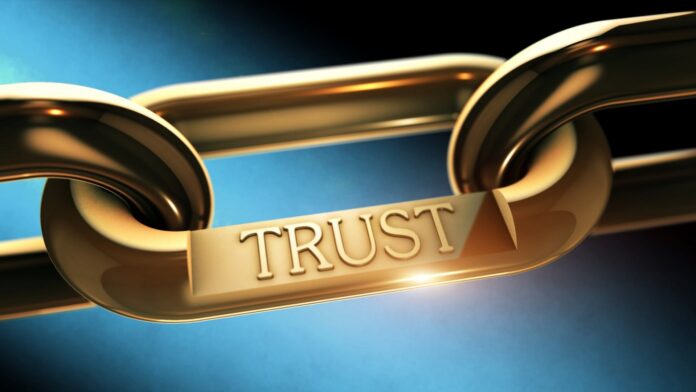Managing any team depends heavily on two things
- Process of tracking Results
- Process of Trust
I have many articles on setting goals and tracking results. Let’s focus on Trust.
A pile of examples is worth a gallon of advice
— Stephen Choo Quan
Webster’s dictionary defines Trust as assured reliance on the character, ability, strength, or truth of someone or something. In simple terms, someone does what they say they will do. You should be able to take the word Trust out and put in the word predictable.
Trust is being able to predict what a person will do. Action and words must align with the brand promise. When we repeatedly deliver evidence of our promises, we develop Trust and not empty promises.
Hype is an oversell. This is incredible and unbelievable. Both mean the same thing, do not trust me. I overpromise.
Why Should you Care about Trust?
Clients and bosses do business and give jobs /promotions to people they know, like, and Trust. There is a difference between being liked and trusted. It would be best if you were both. It is better to be trusted than to be liked, but I believe that all trusted people are loved. If you are liked, then you can build Trust faster. The concept of “like” is easy to understand, but the idea of Trust is often not well understood and practiced.
If I like you, I will listen. If I trust you, I will buy. The more value you provide, the more Trust you build. Client spending is proportional to that Trust. You sell proportionally to the Trust earned.
The order says to other customers that they can trust this business. It has a compounding effect. Word of mouth (WOM) is the most powerful of all Trust. People trust customers’ stories more because they relate to the people who tell them.
Trust is a shortcut bias. Many people do not have time to vet others, so once we get the badge of Trust, we can use it in the same manner that many marketers use branding. Trust is a powerful shortcut to getting new business and reorders.
All things are principles-based: e.g., health is based on nutrients, exercise, sleep, and low stress, so too relationship is based on Trust and generosity.
Every boss wants two things: you want to be trusting and reliable. Bosses place the highest premium on Trust; he says nothing in the world is more important.
If you don’t foster Trust within their organizations, you cannot turn into a trusted advisor.
You can get your idea torpedoed once someone is against you. You did not build Trust in your emotional account. They will get others to side with them to kill your idea.
Establish Trust, enabling people to collaborate effectively by allowing ways to be nimble in a highly regulated environment. When you trust, you let one-off mistakes go.
As A Manager
Trust in the team is much more important than skill and cannot be undervalued. Trust and honesty are the foundation of a team.
Building Trust inspires voluntary cooperation.
Trust and integrity are what people follow. Collaborations won’t work without mutual Trust.
Without Trust, your soldiers will not fight or be battle-ready. A battle-ready organization has high morale, has been in crisis, and has Trust among all members.
Psychological safety: We all want honesty and Trust in our relationships. People lie for two reasons, to avoid punishment or prevent getting caught. Punishment erodes Trust. There is terror, especially around mistakes. Mistakes make People afraid to talk, especially in meetings.
If you must criticize, take a page out of Warren Buffet’s book and compliment first to build Trust because only friends compliment.
Once you have built Trust, they will be willing to share information they previously kept hidden with you. Provide positive reinforcement to help them accept your viewpoint and move forward
Suppose there was no trust…no one would take risks. No risks would mean no exploration, no experimentation, and no advancement.
Being aggressive and refusing to collaborate or compromise doesn’t encourage Trust, only fear.
Blind Trust is bad. It makes the dog jump off the roof because the master calls it, but there is tremendous skepticism in today’s society. You cannot just take that to the bank anymore. Banks have gone bust. Blind Trust is out the door.
Trust but verify. Distrust & caution are the parents of security. Expect what you inspect. Low Trust needs management, but that is not scalable. You want to move from low-trust management to high-trust stewardship.
Seven Laws to High Trust Stewardship of Directs
- Clear Communication of vision
- Describe the problem better than anyone else.
- Be clear, deliberate, and specific in your expectation of results.
- Clarification builds Trust when you explain clearly, the issue, the solution, and the path to get there.
- Get on Video if not in person. Showing your hands builds Trust as a sign of openness.
- Scope and Guidelines
- Be specific about boundaries and when the tasks are complete.
- Mention pitfalls and “gotchas.” admit what you don’t know and explain how you feel about it.
- clarify expectations, especially around roles and goals (boundaries)
- Do not tell direct the steps to take; let them choose their path.
- Develop your process for change management
- Get voluntary Commitment
- Your employees will trust you and share their thoughts and concerns if you’re an honest, open, authentic leader. When someone likes you, it assumes you trust that they will seek your best interest and act in your interest.
- Be friendly by smiling; Friend is the root of being friendly, and we all like friendly people.
- It takes a while to build Trust and friendship; depending on your context, you can use a gift like a cup of coffee to build Trust and friendship. People gravitate to the more pleasant person in the room.
- When people feel that you care and understand how someone feels, they will begin to open up to you.
- Knock your product first to get your audience’s curiosity because curiosity makes people open to new ideas and leads to trust. Vulnerable sharing is cumulative and stacks each side, giving and building layers.
- Eliminate the four-letter words “NEED, Cant, EASY” ASAP and their cousins, “everyone, no one, always, and never.” They erode teamwork and Trust and create an “us vs. them” mentality.
- Resources
- Does each direct report have the materials and equipment to do the work correctly?
- Are you removing obstacles to success?
- Are you allowing freedom to be creative?
- Give a Method of validation.
- Agree on a cadence for reporting and check-ins.
- Supply assertion tests in advance to help your direct reports self-evaluate and feel confident about delivering results.
- The fair process recognizes people for their intellectual and emotional worth.
- Explain the Consequences
- consequences for both good and bad. The carrots and sticks when things go well and when things go sideways.
- Do not put repercussions that will not be enforced, or you will not be trusted. You need to hold the boundaries you set
- Consistency
- Leading by example is the big magic secret. Repeat steps one to six over and over.
- Setting pre-meetings: keeping the same signature, same meeting time, format style, same picture format of the Agenda.
- Post-Meeting: Commitment for Action Steps and delivery dates.
- Responding quickly and honestly: with each statement you land, you gain more credibility and Trust each time and create influence. Trust is who will get the attention is those we trust, but remarkable is about being new and fresh. It would help get extraordinary ideas some attention if you had high Trust, so have your ideas not killed before being heard.
- Value comments in highly-traffic blogs or email distribution lists. Be the trusted advisor, not the salesperson. Someone that customers believe in as the best alternative.
- Memos, Emails, and newsletters are not sales letters and stress getting valuable info to the client and building credibility, relationships, and Trust via solutions over the years.
- Manage conflict, then we can make commitments together, be accountable and responsible and ultimately deliver results together.
Building trust doesn’t happen by accident, it is like a game of snakes and ladders. Establishing a relationship is like climbing a ladder. Every rung brings you closer to engendering Trust and influencing behavior. When you commit, you build hope; when you keep it, you build Trust. Trust is evidence-based.
Broken Trust is hard to restore and is like the snake knocking back to rung one on your ladder. Trust is easier to protect than get it back, and the moment of loss is like a fire that wipes out years of building.
Which of the seven laws are you not following today in your practice?
- Clear Communication of vision
- Scope and Guidelines
- Get voluntary Commitment
- Resources
- Give a Method of validation
- Explain the Consequences
- Consistency











